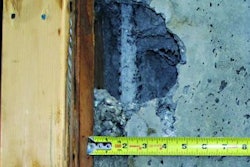With reauthorization of the federal highway and clean drinking water state revolving fund (SRF) programs stalled for lack of funding, lawmakers are looking for alternative means to invest in our nation’s deteriorating infrastructure. Last week, two bills were introduced that could provide substantial infrastructure investment.
Sustainable Water Infrastructure Investment Act
As Associated Equipment Distributors (AED) members from across the country hit the Hill to lobby lawmakers about the importance of infrastructure investment to equipment markets, Sens. Robert Menendez (D-NJ) and Mike Crapo (R-ID), and Reps. Geoff Davis (R-KY) and Bill Pascrell (D-NJ), introduced the Sustainable Water Infrastructure Investment Act (S. 939/H.R. 1802). The bill lifts the state volume cap on exempt facility bonds (or private activity bonds) for water infrastructure projects.
A top AED priority, the legislation is expected to generate $50 billion in private capital investment while costing the federal government only $354 million in lost tax revenue over ten years. Based on AED's estimate that each dollar spent on underground infrastructure generates 12 cents in equipment market opportunity, the bill could generate as much as $6 billion in equipment demand over the next decade. Last Congress, provisions to lift the cap on private activity bonds for water infrastructure projects were included in two separate bills that passed the House and were included in several Senate proposals.
Now is the time to contact your lawmakers to urge them to cosponsor S. 939 and H.R. 1802. Visit AEDaction.org to weigh-in with your representative and senators.
Infrastructure Jobs & Energy Independence Act
On May 12, Reps. Tim Murphy (R-PA), Bill Shuster (R-PA), Jim Costa (D-CA), and Tim Walz (D-MN), leaders of the Bipartisan Energy Working Group, introduced the Infrastructure Jobs & Energy Independence Act (H.R. 1861).
The legislation dedicates revenues from offshore oil and gas exploration leases and royalties to slash the deficit, build clean-coal and nuclear power plants, clean up our air and water, and rebuild our crumbling highways and bridges. The bill is estimated to create 1.2 million new jobs annually and $8 trillion in economic output without raising taxes.
The bill’s estimated $2.2 trillion to $3.7 trillion in generated federal revenue will be distributed as follows:
- Infrastructure Renewal will receive 20% ($440 billion) to offset the $2.2 trillion in repairs needed for America’s locks, dams, bridges, roads, and highways. The funds will be used for federal and state highway and highway safety construction programs, water resources development construction projects through the Army Corps of Engineers, mass transit programs, freight rail, and passenger rail construction.
- Renewable Energy and Energy Efficiency will receive 15% ($330 billion) to offset the costs of extending and creating the alternative energy and conservation tax incentives.
- Clean Coal Technology Deployment Carbon Capture and Sequestration will receive 8% ($220 billion) to develop dedicated funding for the research, development, and construction of coal fired power plants that utilize the most advanced pollution controls to prevent the release of greenhouse gasses.
- Environmental Restoration will receive 4% ($88 billion),which will provide dedicated funding for the overall health of the national ecosystem, primarily or entirely within wildlife refuges, national parks, lakes, bays, rivers and streams.
- Conservation efforts will receive 3% ($66 billion), which will provide dedicated funding for efforts to conserve America’s natural resources and increase energy efficiency in buildings and transportation.
- Carbon Free Technology Deployment and Nuclear Energy will receive 5% ($110 billion), which will be dedicated to carbon free technology encouraging America’s commercial nuclear renaissance.
- Clean Water and Wastewater Infrastructure will receive 3% ($66 billion), which will provide dedicated funding to modernize and rebuild America’s water and wastewater infrastructure to ensure clean water and protect the environment.
- Low Income Home Energy Assistance Program will receive 2% ($44 billion) to provide energy assistance to the elderly and poor.
- Producing states will receive 30% ($660 billion) to help expedite the process of exploration and production of off-shore resources.
- Federal Treasury will receive 10% ($220 billion) to help pay down debt or shrink the deficit.
H.R. 1861 has been referred to the appropriate House committees for consideration.

















